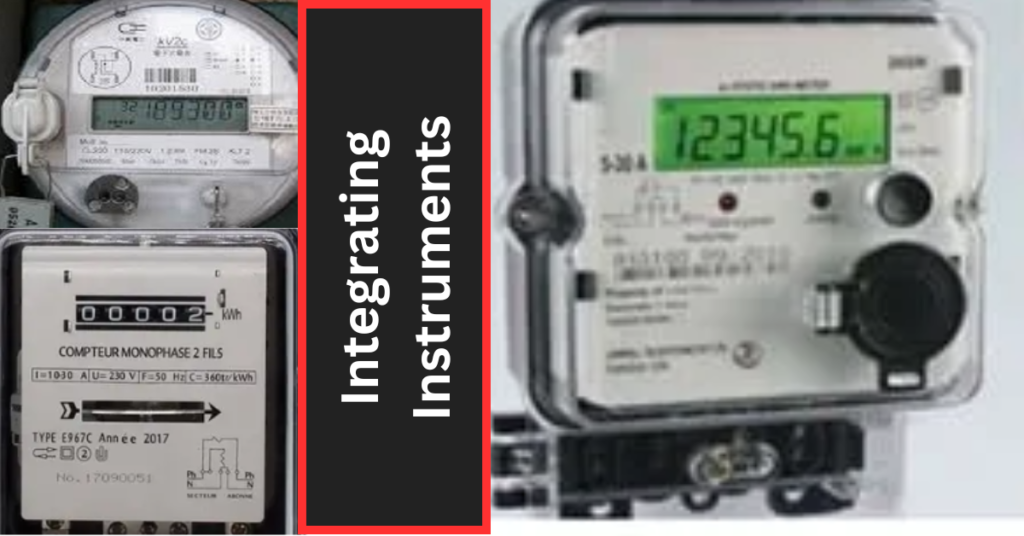In the field of measurement and control systems, integrating instruments are known for their ability to accumulate values over time, providing a comprehensive understanding of the dynamics of different physical, chemical, and electrical processes. This comprehensive analysis explores the complexities of integrating instruments, including their classification, benefits, varied applications, and the different types that are used in current practice.
Classification of Integrating Instruments
The classification of integrating instruments provides a structured way to understand the breadth of these devices. It revolves around the nature of the measurable quantity, the operation mechanism, and their specific uses in industry and research.
By Measured Quantity
- Electrical Instruments: These are designed to measure electrical quantities such as voltage, current, power, and energy. They are pivotal in power distribution and management systems.
- Fluid Instruments: These instruments are used to measure the flow rate or total volume of fluids. They are essential in water treatment facilities, the petrochemical industry, and any system involving fluid transport.
- Mechanical Instruments: These calculate physical quantities like distance, area, and volume, which are crucial in construction, manufacturing, and surveying.
By Operational Principle
- Analog Instruments: These instruments rely on continuous signals to represent the measured quantity. The integration is often realized through mechanical means (e.g., gears and wheels) or by using electrical analog circuits.
- Digital Instruments: Utilizing digital electronics, these instruments measure and integrate quantities using counters or microprocessors, offering precision and ease of digital data management.
Advantages of Integrating Instruments
Integrating instruments offer several key advantages that make them indispensable in various applications:
- Enhanced Accuracy: By integrating over time, these instruments smooth out transient variations, providing a true representation of the measured quantity over the period of interest.
- Operational Efficiency: The ability to continuously monitor processes allows for real-time adjustments, optimizing energy use and reducing waste.
- Comprehensive Data Analysis: The data collected over time can be used for trend analysis, predictive maintenance, and strategic decision-making in both industrial and environmental contexts.
- Cost Savings: By optimizing resource use and process efficiency, integrating instruments can lead to substantial reductions in operational costs.
Applications of Integrating Instruments
The versatility of integrating instruments means they find utility in a wide range of fields:
- Industrial Process Control: In manufacturing, integrating instruments are used to ensure the precise use of ingredients, monitor energy consumption, and maintain product quality.
- Energy Sector: They are critical for the efficient distribution and use of electrical power, measuring both consumption and generation in real time.
- Environmental Science: Used to track environmental parameters such as air and water quality over time, aiding in pollution control and resource management.
- Healthcare: In radiation therapy, dosimeters measure the dose of radiation received by patients, ensuring safety and efficacy.
Types of Integrating Instruments

The landscape of integrating instruments is diverse, with each type serving specific measurement needs:
- Electrical Energy Meters: Measure the total electrical energy consumed by a load, essential for billing and energy management in homes and industries.
- Flow Meters: These devices can be further subdivided into volumetric and mass flow meters, crucial for the accurate measurement of liquid and gas flows in pipelines.
- Gas Meters: Specifically designed for measuring gas flow, these meters are vital in natural gas distribution and in industries where gas is a primary raw material or product.
- Watthour Meters: A subtype of electrical energy meters, these are used to measure the energy used by electric motors, heaters, and other devices, facilitating energy management and conservation.
- Dosimeters: Critical in areas where exposure to hazardous substances or radiation is a concern, dosimeters provide a measure of the cumulative exposure over time to ensure safety and compliance with regulatory standards.
Conclusion
Integrating instruments embody the convergence of accuracy, efficiency, and versatility. By offering a means to measure and integrate various quantities over time, they play a crucial role in optimizing industrial processes, advancing scientific research, and promoting environmental stewardship.
As technology progresses, the development of more sophisticated integrating instruments is inevitable, promising even greater precision, ease of use, and applicability across a broader spectrum of disciplines. Their continued evolution is set to further enhance our ability to measure, understand, and control the complex systems that define the modern world.
Related Articles: